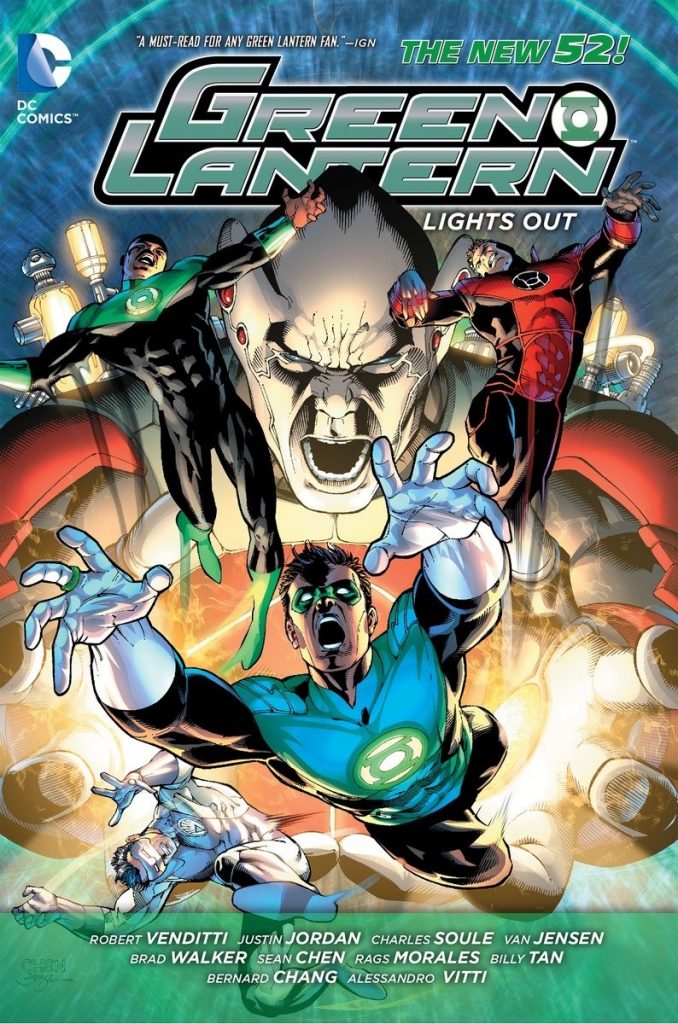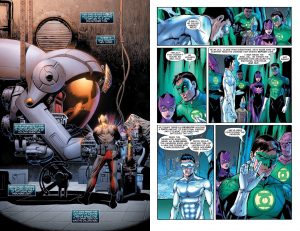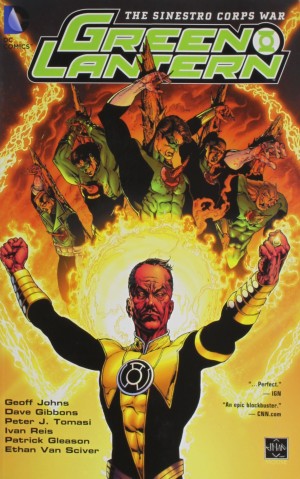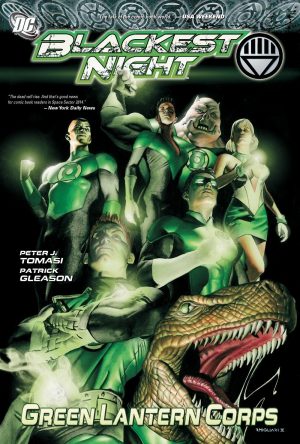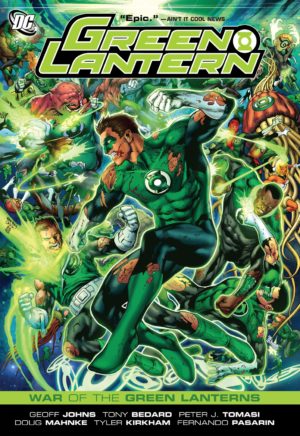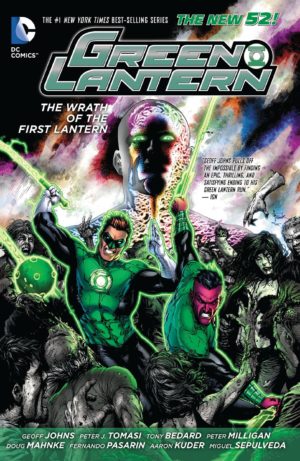Review by Frank Plowright
During the acclaimed Geoff Johns era of Green Lantern, crossovers between the assorted associated titles were frequent (see recommendations), and that continued to be the pattern despite the possibility of epic fatigue. Lights Out is the first post-Johns crossover, introducing Relic, a being from an earlier universe determined to stop Lanterns of any shade using their powers.
Relic’s origin and methods may owe more than a little to Galactus, but his purpose is interesting and selfless. All power rings are activated by forms of emotion, so where does that emotion come from to be stored in the power batteries? Is it really infinite? Billy Tan’s sample page supplies the gist. After a prologue showing what Relic can do, Robert Vendetti and Rags Morales supply his back story via captions overlaid on single page illustrations, every one a glorious pulp magazine cover. That chapter provides Lights Out with an interesting ethical perspective, as while methods and responses can be questioned, no-one here is in the wrong.
While Morales is the most impressive artist, he’s only having to provide impressions as a series of pin-ups, and the storytelling from everyone else is solid, with some artists better than others at providing emotions other than anger.
No concession is made to anyone wanting to pick up a Green Lantern story without being mired in their history. The presumption is that readers will be familiar with all characters, which is fine for individual issues of a series, but isn’t inclusive when it comes to a graphic novel. The entities powering the rings have a big part to play, making a chapter focussing on Kyle Rayner very difficult to understand, and without a broad knowledge of background John Stewart seems to pull a rabbit from a hat. When something as simple as a page of introductory text could make a difference, it’s a continuing failing of gathered crossovers. Another problem that should be addressed is how some art and dialogue almost slips into the binding.
Anyone who does know their Indigo Lantern from their Blue Lantern is taken on a thrilling ride. Lasting changes are made to the continuities of the various Lanterns, it sets up a moral quandry and dumps one hell of a problem for the future. From here the assorted participants move back into their own continuities to be reunited for Godhood.
